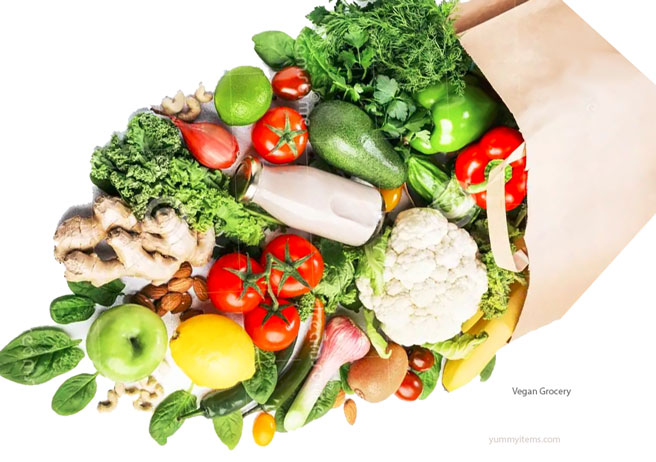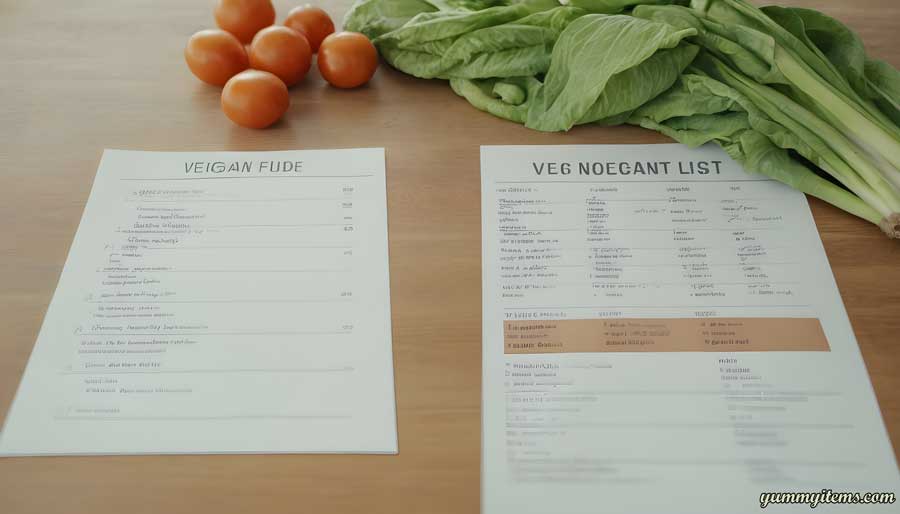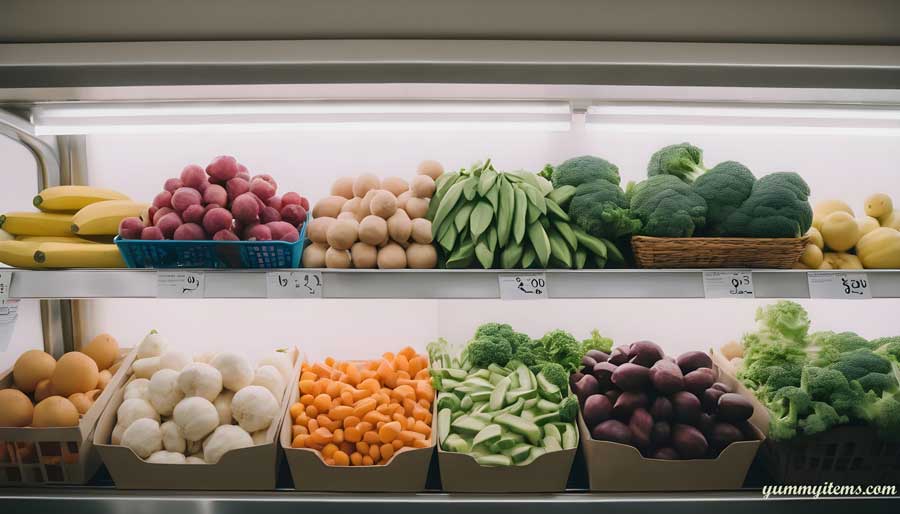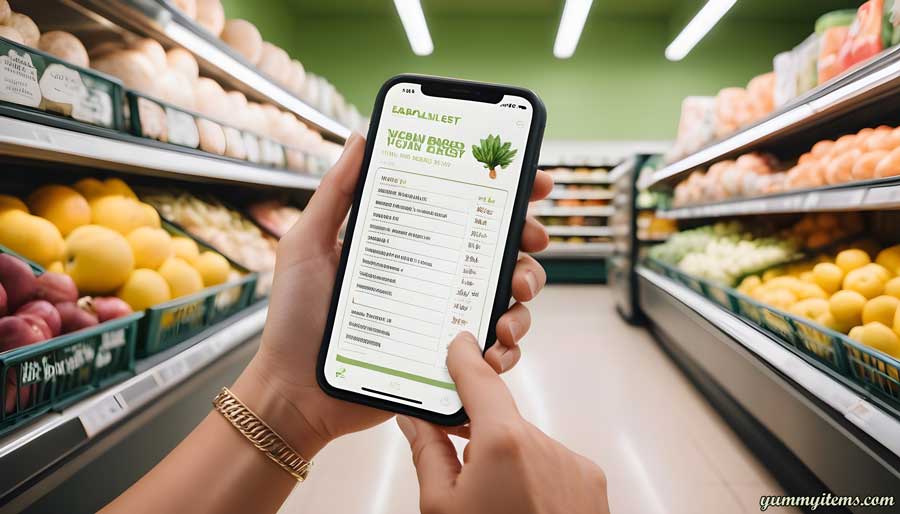In today’s world, many individuals are embracing a vegan lifestyle for various reasons, such as health, environmental concerns, and animal welfare. However, there’s a common misconception that eating vegan is expensive. While it’s true that some vegan specialty items can be costly, it’s entirely possible to maintain a budget-friendly vegan diet. In this comprehensive guide, we’ll explore how to create a grocery list for a vegan on a budget, ensuring you can enjoy delicious, nutritious plant-based meals without straining your wallet.

Section 1: The Basics of Budget-Friendly Veganism
Before diving into creating your grocery list, it’s essential to understand the basics of budget-friendly veganism. Here are some fundamental principles to keep in mind:
- Prioritize Whole Foods: Whole foods like grains, legumes, fruits, and vegetables are the foundation of a budget-friendly vegan diet. They’re nutritious, versatile, and generally more affordable than processed vegan alternatives.
- Cook at Home: Eating out at vegan restaurants or constantly buying pre-packaged vegan meals can quickly drain your budget. Cooking at home allows you to control ingredients and costs.
- Plan Your Meals: Meal planning is a key strategy for budget-conscious vegans. By planning your meals in advance, you can buy only what you need and minimize food waste.
Section 2: Building Your Budget-Friendly Vegan Grocery List

Creating a budget-friendly vegan grocery list involves a bit of strategy and creativity. Here’s a breakdown of the essential categories to consider:
A. Staples
Staples are the foundation of any grocery list. These items form the basis of many vegan meals and can be quite affordable:
- Rice: Brown rice, white rice, or other grains of your choice.
- Pasta: Opt for whole wheat or legume-based pasta for added protein.
- Beans and Legumes: Stock up on dried beans like lentils, chickpeas, and black beans.
- Oats: Perfect for breakfast options like oatmeal and granola.
B. Fresh Produce
Fresh fruits and vegetables are essential for a balanced vegan diet. To save money, focus on seasonal and locally sourced options:
- Leafy Greens: Spinach, kale, and collard greens.
- Root Vegetables: Carrots, potatoes, and sweet potatoes.
- Fruits: Apples, bananas, oranges, and whatever is in season.
- Onions and Garlic: Versatile ingredients for various dishes.
C. Plant-Based Proteins
Protein is a vital component of a vegan diet. While tofu and tempeh are great sources, there are budget-friendly options too:
- Canned Beans: Convenient and cost-effective sources of plant-based protein.
- Lentils: Versatile and packed with protein, fiber, and essential nutrients.
- Frozen Edamame: A budget-friendly source of protein for stir-fries and salads.
D. Dairy Alternatives
If you enjoy dairy alternatives like milk and yogurt, consider these budget-friendly options:
- Oat Milk: Often more affordable than almond or soy milk.
- Store-Brand Plant-Based Yogurt: Look for generic brands to save money.
- Homemade Nut Butter: Make your own nut butter using affordable bulk nuts.
E. Pantry Staples
Your pantry should be well-stocked with essential vegan ingredients:
- Spices and Herbs: A variety of spices can transform simple ingredients into flavorful dishes.
- Nutritional Yeast: Adds a cheesy flavor to dishes and provides essential nutrients.
- Soy Sauce or Tamari: Essential for creating savory sauces and marinades.
- Canned Tomatoes: Great for making pasta sauces, curries, and stews.
F. Snacks and Treats
Even budget-conscious vegans need some indulgence:
- Popcorn Kernels: Make your own popcorn for a cheap and satisfying snack.
- Nuts and Seeds: Buy in bulk for cost savings.
- Dark Chocolate: A small piece can satisfy your sweet tooth.
G. Frozen Vegetables
Frozen veggies are often more affordable than fresh and retain their nutrients:
- Mixed Vegetables: Great for stir-fries and side dishes.
- Frozen Berries: Perfect for smoothies and oatmeal.
Section 3: Budget-Friendly Meal Planning

Now that you have your vegan grocery list, it’s time to plan your meals efficiently. Here’s how:
- Batch Cooking: Prepare large batches of meals and freeze portions for later. This saves time and reduces food waste.
- Repurpose Leftovers: Get creative with leftovers. Yesterday’s chili can become today’s burrito filling.
- Use Coupons and Discounts: Keep an eye out for coupons, sales, and discounts on vegan products.
- Shop in Bulk: Buying in bulk can save money in the long run, especially for grains, legumes, and non-perishable items.
- Limit Convenience Foods: While convenient, processed vegan foods can be costly. Save them for occasional treats.
Section 4: Sample Budget-Friendly Vegan Meal Plan

To help you get started, here’s a sample one-week budget-friendly vegan meal plan:
Day 1:
- Breakfast: Oatmeal with sliced bananas and peanut butter.
- Lunch: Lentil and vegetable stir-fry with brown rice.
- Dinner: Spaghetti with marinara sauce and a side salad.
Day 2:
- Breakfast: Whole grain toast with avocado and tomato.
- Lunch: Chickpea salad with lemon-tahini dressing.
- Dinner: Baked sweet potatoes with black bean and corn salsa.
Day 3:
- Breakfast: Smoothie with spinach, frozen berries, and almond milk.
- Lunch: Quinoa and vegetable bowl with a homemade vinaigrette.
- Dinner: Stir-fried tofu with broccoli and garlic sauce.
Day 4:
- Breakfast: Vegan yogurt with granola and sliced peaches.
- Lunch: Hummus and veggie wraps with a side of carrot sticks.
- Dinner: Red lentil curry with rice.
Day 5:
- Breakfast: Overnight oats with chia seeds and mixed berries.
- Lunch: Spinach and mushroom quesadillas.
- Dinner: Baked falafel with couscous and tzatziki sauce.
Day 6:
- Breakfast: Smoothie bowl with sliced kiwi, nuts, and seeds.
- Lunch: Vegan chili with a side of whole-grain crackers.
- Dinner: Stuffed bell peppers with quinoa and black beans.
Day 7:
- Breakfast: Vegan pancakes with maple syrup and fresh fruit.
- Lunch: Avocado and white bean salad.
- Dinner: Vegetable stir-fry with tofu and brown rice.
Section 5: Conclusion
Eating vegan on a budget is not only possible but also rewarding. By prioritizing whole foods, planning your meals, and being mindful of your purchases, you can enjoy a nutritious and budget-friendly vegan diet. Remember, it’s not just about saving money; it’s also about making environmentally conscious and healthful choices. So, grab your grocery list, hit the store, and embark on your journey toward affordable, sustainable, and delicious vegan living. Your wallet, your health, and the planet will thank you.

